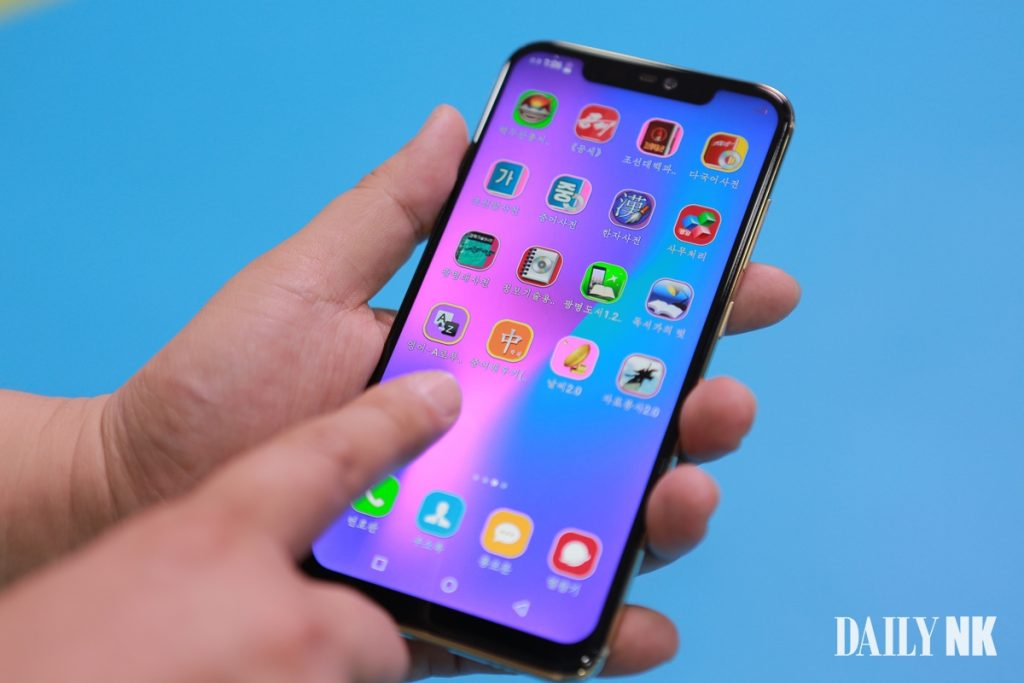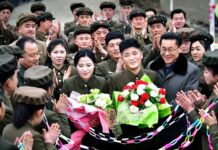
Daily NK’s recent analysis of North Korea’s newest smartphone, the Pyongyang 2425, suggests that five types of data plan are available in the country. The packages offer varying data transmission speeds and some even provide free data usage at night.
This information was gleaned from the “help” section of a newspaper app, “Kongsae,” which comes pre-loaded on all Pyongyang 2425 phones. The app requires users to connect to mobile data and provides details on the types of data plans available and how to sign up for them.
The app lists five data plans as available. Unlike South Korean data plans, which have specific names referring to the fees and features of each plan, North Korean data plans are referred to as numbers with the company Kangsong Net managing data plan levels one and two and Koryolink managing levels two to five. Koryolink was initially funded by Egypt’s Orascom while Kangsong Net is managed by the North Korean state.
Free data is provided to users depending on the plans they select. Koryolink’s level five data plan provides 5 GB of free data to users who make payments on a quarterly basis. This suggests that the free data is likely provided on a quarterly basis.
Kangsong Net’s data plans for levels one and two provide users with free data between the hours of 11 PM to 9 AM. Additional fees apply for use outside these hours.
Koryolink’s level two data plan does not provide free mobile data, suggesting that the free mobile data offered by Kangsong Net could be a strategy to gain greater market share.
There are few users of mobile data during the hours after 11 PM, so Kangsong Net likely does not face a burden on its systems or its bottom line. The strategy may be aimed at both preventing existing customers from leaving the service and attracting new users.
Competition in North Korea’s IT sector can also be seen outside the country’s mobile service providers. North Korean smartphone companies compete on design and performance. The country’s major smartphone companies include Checom Technology Joint Venture Company, which sells and alleges to manufacture the Pyongyang line of mobile phones; the Arirang Information Technology Exchange Company, responsible for the Arirang line of phones; and the Mangyongdae Information Technology Company, which offers the Jindallae line of phones. Each company tries to attract customers by offering distinct mobile phone designs and features.
Smartphone app stores on North Korean phones are also an area of intense competition. The Pyongyang 2425 has two app stores: My Comrade Gil (or My Traveling Companion) 4.1 and “Information Service 2.0.”
Information Service 2.0 allows users to purchase apps with Jonsong Cards, North Korea’s version of a debit card, while My Comrade Gil 4.1 only supports the use of the Samhung Card. My Comrade Gil 4.1 was developed by the Samhung Information Technology Exchange Company and this may be the reason the app store only supports Samhung Cards.

Mobile users wishing to read magazines or watch videos have to sign up for data plan level two.
This is due to the data transmission speed provided by data plan level two. According to “Weather 2.0,” an app pre-installed on Pyongyang 2425, data plan level two’s transmission speed is 128 Kbps, while data plan level three is 1 Mbps. The data transmission speed of data plan level one is below 128 Kbps, while the speeds of data plan levels four and five are more than 1 Mbps.
Users are recommended to use data plan level two to view media files because level one’s transmission speed is too low.
In general, 128 Kbps is considered the standard for a 2G network. At this speed, it takes around 68 seconds to load a 1 MB (1024 KB) page, with transmission speeds of around 15 KB per second. This means that data plans lower than level two may have difficulty opening media files.
A transmission speed of 1 Mbps is considered the standard for 3G networks and can download 122KB worth of data per second, or the equivalent of 10 seconds to load 1 MB worth of data. This is much faster than the speed offered by data plan level two and can allow for quick loading of pictures and videos.
Daily NK further found that mobile service providers allow users to sign up or leave data plans by sending a text message to a specific number.
The “help” section of the “Kongsae” app tells data plan level one users (Kangsong Net) to send a text message with the characters *RD50 A# to number 555 to sign up for the data plan, and to send *RD50 D# to cancel the plan. Data plan level two users can send text messages with the characters *RD100 A# and *RD100 D# to sign up or cancel their plans, respectively.
The use of the numbers 50 and 100 in these text messages suggests that they refer to 56 Kbps and 128 Kbps, while “A” signifies “signing up” and “D” refers to “cancelling.” More analysis on this, however, is needed because the Weather 2.0 app states that users can sign up for a data plan by sending a message with *#RD [user password] A# or *#RD [user password ]D# to cancel.
Koryolink provides a similar way for users to sign-up to and cancel data plans. Data plan level two, for example, requires users to send a message with the characters *#i2A# to number 555 and *#i2D# to cancel. Data plan level five requires text messages with the characters *#i5A# and *#i5D# to signup and cancel, respectively. The numbers here refer to the type of data plan and the letters “A” and “D” signify whether the message is aimed at signing up to or cancelling a plan.

The North Korean authorities provide permission to smartphone users so that they can view information other than the Rodong Sinmun through their Kongsae apps. The authorities even restrict North Koreans from viewing most of the news created by the state itself, with this “permission system” revealing a glimpse into the North Korean state’s draconian control over information.
Information provided for the Kongsae app states that registered users must receive permission [via a viewing access number] that provides time-limited access to materials published by the Central Party and news sources other than the Rodong Sinmun.
The guide then directs users to obtain the viewing access code through the “Jonsong Card payment on the Kongsae homepage managed by the national computer network [Kwangmyong].” Users require an electronic certificate issued by the Information Communication Bureau to sign up to the Kongsae homepage and make payments with a Jongsong Card.



















